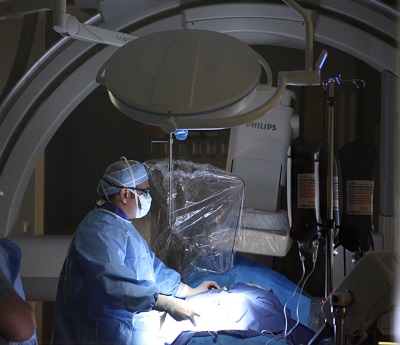
A thinning or weakening of the arterial wall creating a balloon-like bulge, aneurysms can grow (and continue to grow) while many patients remain unaware.
 Dr. Aniel Majjhoo
Dr. Aniel Majjhoo A ruptured aneurysm causes a subarachnoid hemorrhage, a severely life-threatening condition. Symptoms of a ruptured aneurysm are a sudden and severe headache (which one might describe as their "worst headache ever"), nausea and vomiting which may be accompanied with blurred vision, sensitivity to light and loss of consciousness.
"This is truly a medical emergency, and should you or anyone around you begin to experience these symptoms, dial 9-1-1 immediately," Dr. Majjhoo said.
Risk factors for aneurysms include:
"¢ Smoking
"¢ High blood pressure
"¢ Family history
"¢ Age (over 40)
"¢ Age and gender (women and people of color are at an increased risk)
"¢ Drug and excessive alcohol use
"¢ Head trauma
"¢ Other neurological condition
See your physician if you experience worsening headaches accompanied with blurred vision, pain above or behind the eye, hard time speaking, numbness in one side of your face, as these are symptomatic of an unruptured aneurysm.
Treatments include procedures to divert the blood flow, which aids in the growth of the aneurysm, over it, such as endovascular coiling or the Pipelineâ„¢ Flex embolization, a minimally invasive neurological procedure that was performed for the first time in Macomb County by McLaren Macomb neurologists.
Make an appointment with your primary care physician to discuss your risk for an aneurysm. Don't have a primary care physician? Make an appointment at mclaren.org/appointments.